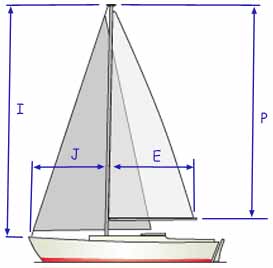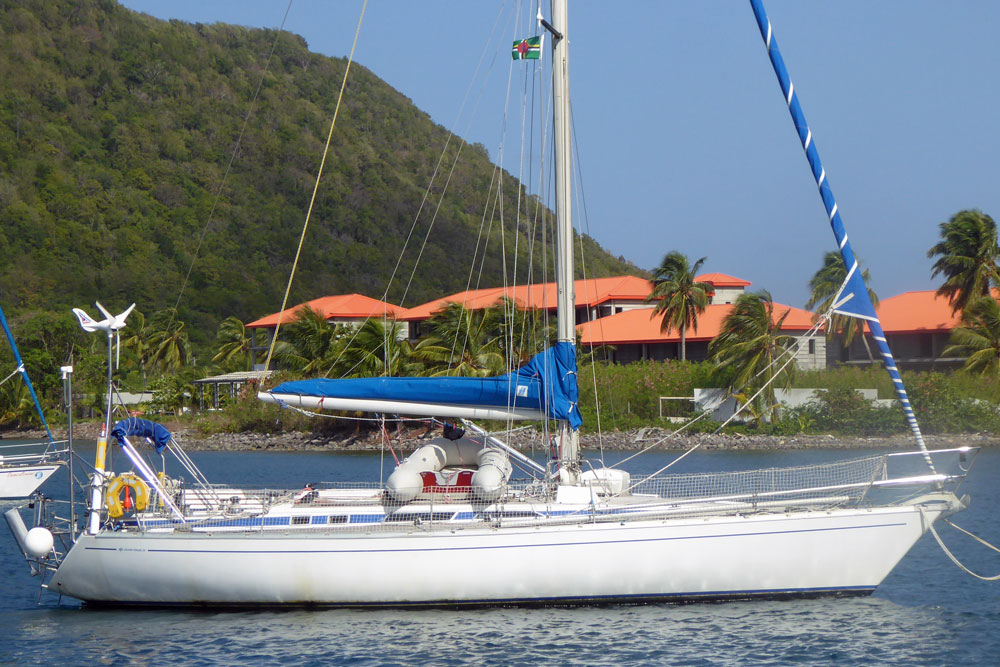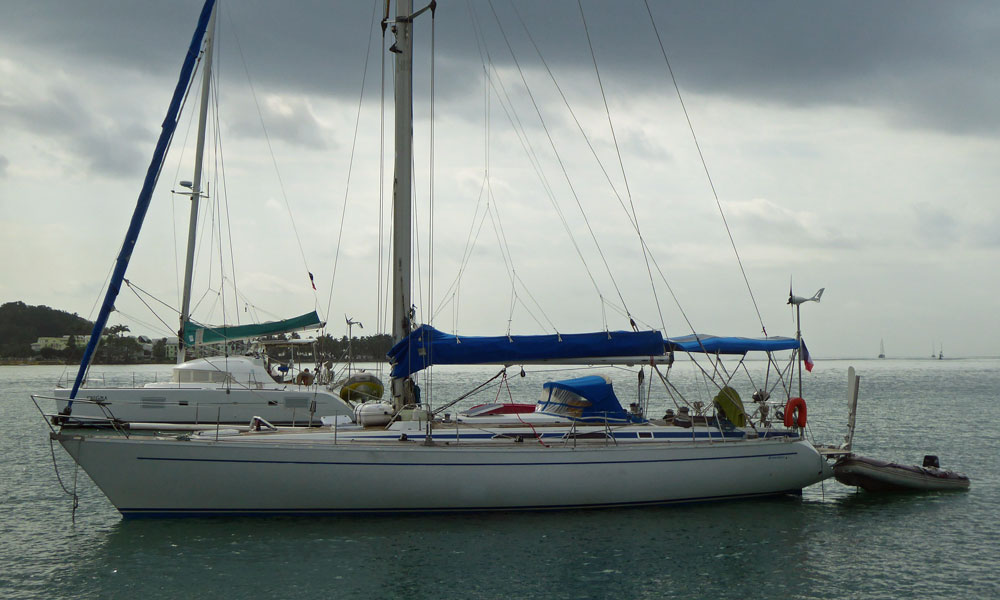- Home
- Cruising Yachts 35' to 40'
- Grand Soleil 37 Sailboat Specs
The Grand Soleil 37 Sailboat
Specs & Key Performance Indicators
The Grand Soleil 37 sailboat, designed by the naval architect partnership of Botin & Carkeek, was built by Cantiere del Pardo, an Italian shipyard located in Forlì, Italy.
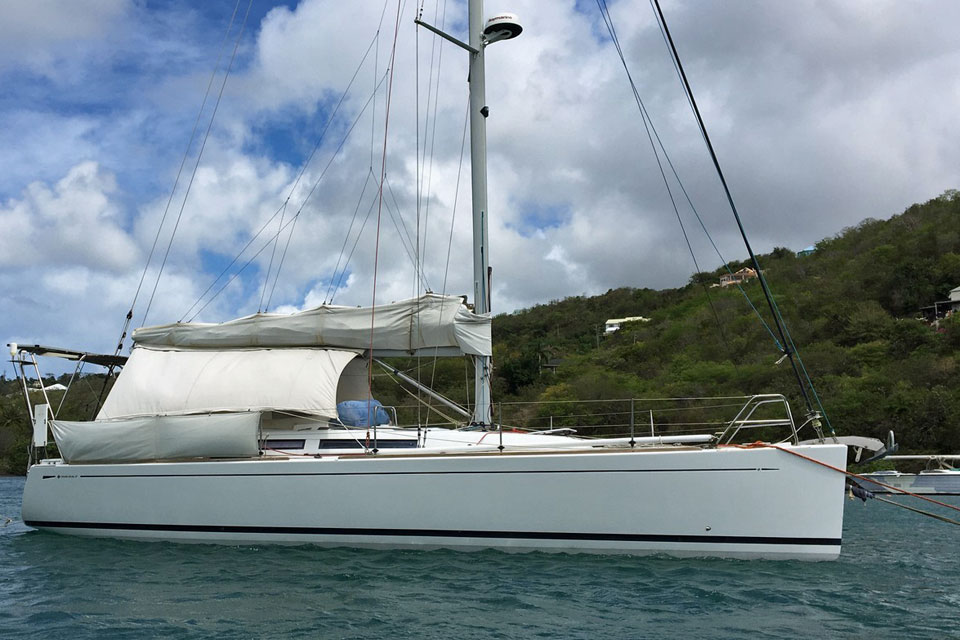 Grand Soleil 37
Grand Soleil 37Published Specification for the Grand Soleil 37
Keel & Rudder Configuration: Fin keel with a spade rudder
Hull Material: GRP (Glass Reinforced Polyester)
Length Overall: 11.7m (38'5")
Waterline Length: 9.8m (32'2")
Beam: 3.67m (12'0")
Draft: 2.4m (7'11")
Rig Type: Fractional Sloop
Displacement: 6,800 kg (14,991 lbs)
Ballast: 2,050 kg (4,519 lbs)
Water Tank Capacity: 360 liters (95.1 gallons)
Fuel Tank Capacity: 140 liters (37 gallons)
Hull Speed: 7.6 knots
Designer: Botin & Carkeek*
Builder: Cantiere del Pardo
Year First Built: 2005
* Botin & Carkeek was a renowned yacht design partnership founded by Marcelino Botin and Shaun Carkeek. They were known for designing some of the world's fastest racing yachts. Their designs were particularly popular in high-performance sailing competitions, including the Volvo Ocean Race.
Marcelino Botin continues to lead Botin Partners, which remains a prominent name in naval architecture, producing innovative and elegant yachts. Shaun Carkeek, on the other hand, founded Carkeek Design Partners in 2010, focusing on high-performance race, power, and superyacht design.
Sail Areas & Rig Dimensions
I: 15.0m (49'2")
J: 4.35m (14'3")
P: 14.5m (47'7")
E: 5.0m (16'5")
Mainsail Area: 36.25m2 (390ft2)
Genoa Area: 32.63m2 (351ft2)
Spinnaker Area: 110m2 (1,184ft2)
Published Design Ratios
The Key Performance Indicators (KPIs)
The following analysis of the design ratios gives an indication of the boat's likely sailing characteristics, but see the 'Notes of Caution' below:
Sail Area/Displacement Ratio: 25
With a Sail Area/Displacement Ratio of 25, the Grand Soleil 37 is considered to have a relatively high-performance capability. This means the boat is likely to be quite powerful and capable of good speeds, offering a thrilling sailing experience, especially in lighter winds.
Ballast/Displacement Ratio: 33%
A Ballast/Displacement Ratio of 33% indicates that the Grand Soleil 37 has moderate stiffness but not extremely high. It won't be as stiff or as powerful in standing up to strong winds compared to boats with a ratio of 40% or more. However, it should still perform adequately in a range of wind conditions, providing a balanced blend of performance and stability.
Displacement/Length Ratio: 205
With a Displacement/Length Ratio of 205, the Grand Soleil 37 falls into the Moderate Displacement category. This suggests that it is neither too light to be thrown around by waves nor too heavy to be sluggish. It offers a good balance, requiring a moderate amount of sail area to reach its design hull speed. It should be relatively responsive without sacrificing too much comfort or stability.
Comfort Ratio: 22.5
A Comfort Ratio of 22.5 places the Grand Soleil 37 in the category associated with a somewhat lively motion, typical of a coastal cruiser with moderate stability. This implies that while it may exhibit some motion in rougher conditions, it should be comfortable enough for coastal cruising and moderate offshore sailing, albeit with a bit of liveliness.
Capsize Screening Formula: 2.0
With a Capsize Screening Formula of 2.0, the Grand Soleil 37 is on the threshold of being considered suitable for ocean passages. It suggests that the boat has a relatively balanced design with a reasonable beam compared to its displacement, making it capable of handling offshore conditions, but not with the robustness of boats with a lower capsize screening number.
In summary, the Grand Soleil 37 sailboat is a high-performance cruiser with moderate stability and comfort. It offers a lively sailing experience with good speed potential and decent handling capabilities for offshore passages, although it might not be as stiff or as comfortable in rough seas as heavier, bluewater-oriented vessels.
Here's how to calculate the KPIs yourself - without having to wrestle with the mathematics...
Design Ratios: Notes of Caution...
- The Sail Area/Displacement Ratio (SA/D): This ratio provides an estimate of the sail power relative to the boat's weight, which can indicate potential speed in various wind conditions. But it doesn't account for the efficiency of the sail plan, the rigging, or the skill of the crew. Real-world performance can vary significantly based on these factors.
- The Ballast/Displacement Ratio (B/D): This ratio gives an idea of the boat's stability and stiffness, which is crucial for handling and safety. But it doesn't consider the distribution of the ballast or the hull shape, both of which can greatly affect stability. A high B/D ratio alone doesn't guarantee a stable boat if the ballast is poorly distributed.
- The Displacement/Length Ratio (D/L): This ratio helps predict the boat's speed potential and its behaviour in different sea conditions. But it doesn't account for the hull design or the boat's overall weight distribution. Two boats with the same D/L ratio can perform very differently if their hull shapes are different.
- The Comfort Ratio (CR): This ratio estimates the boat's motion comfort in a seaway, which is important for long passages. But it doesn't consider the boat's interior layout, which can also affect comfort. Additionally, personal tolerance to motion varies, so a boat that is comfortable for one person might not be for another.
- The Capsize Screening Formula (CSF): This formula assesses the likelihood of a boat capsizing in heavy seas, which is critical for offshore safety. But it doesn't take into account the boat's handling characteristics or the skill of the crew. A boat with a low CSF can still capsize if poorly handled in severe conditions.
General Limitations
- Static Nature: These ratios are static measurements and don't account for dynamic factors like wave action, wind gusts, or crew actions.
- Simplification: They simplify complex interactions into single numbers, which can be misleading. Real-world performance is influenced by a multitude of factors that these ratios can't fully capture.
- Context: The context in which the boat is used (e.g., coastal cruising vs. offshore racing) can greatly affect how these ratios should be interpreted.
In summary, while these ratios provide valuable insights into the theoretical performance characteristics of a sailboat, they should be used as part of a broader assessment that includes practical experience, sea trials, and expert advice.
Other sailboats in the Grand Soleil range include:
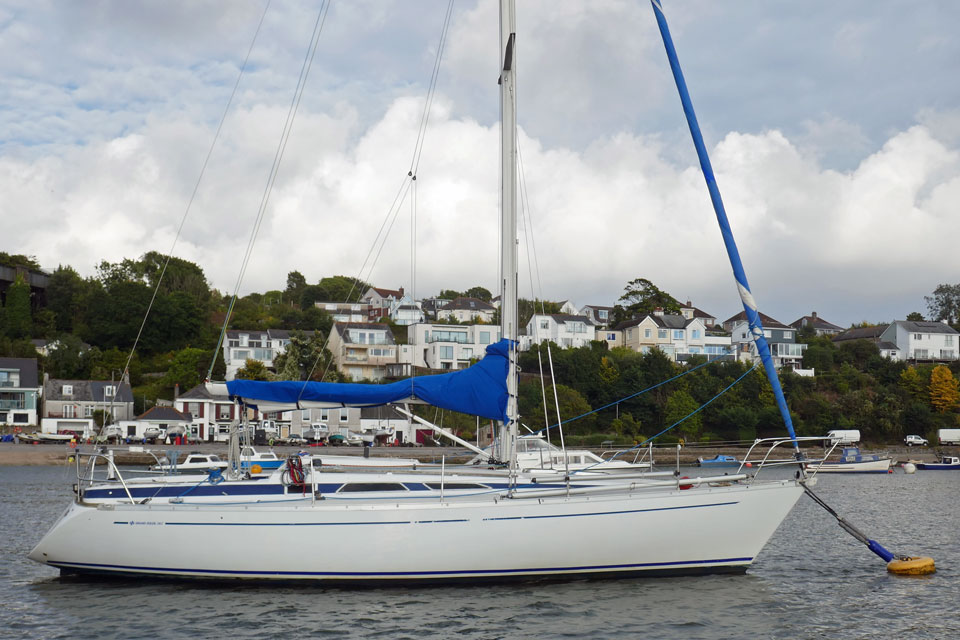 The Grand Soleil 343
The Grand Soleil 343This article was written with the assistance of Gemini, a large language model developed by Google. Gemini was used to gather information, summarize research findings, and provide suggestions for the content and structure of the article.
Recent Articles
-
Albin Ballad Sailboat: Specs, Design, & Sailing Characteristics
Jul 09, 25 05:03 PM
Explore the Albin Ballad 30: detailed specs, design, sailing characteristics, and why this Swedish classic is a popular cruiser-racer. -
The Hinckley 48 Sailboat
Jul 09, 25 02:44 PM
Sailing characteristics & performance predictions, pics, specifications, dimensions and those all-important design ratios for the Hinckley 48 sailboat... -
The Hinckley Souwester 42 Sailboat
Jul 09, 25 02:05 PM
Sailing characteristics and performance predictions, pics, specifications, dimensions and those all-important design ratios for the Hinckley Souwester 42 sailboat...
